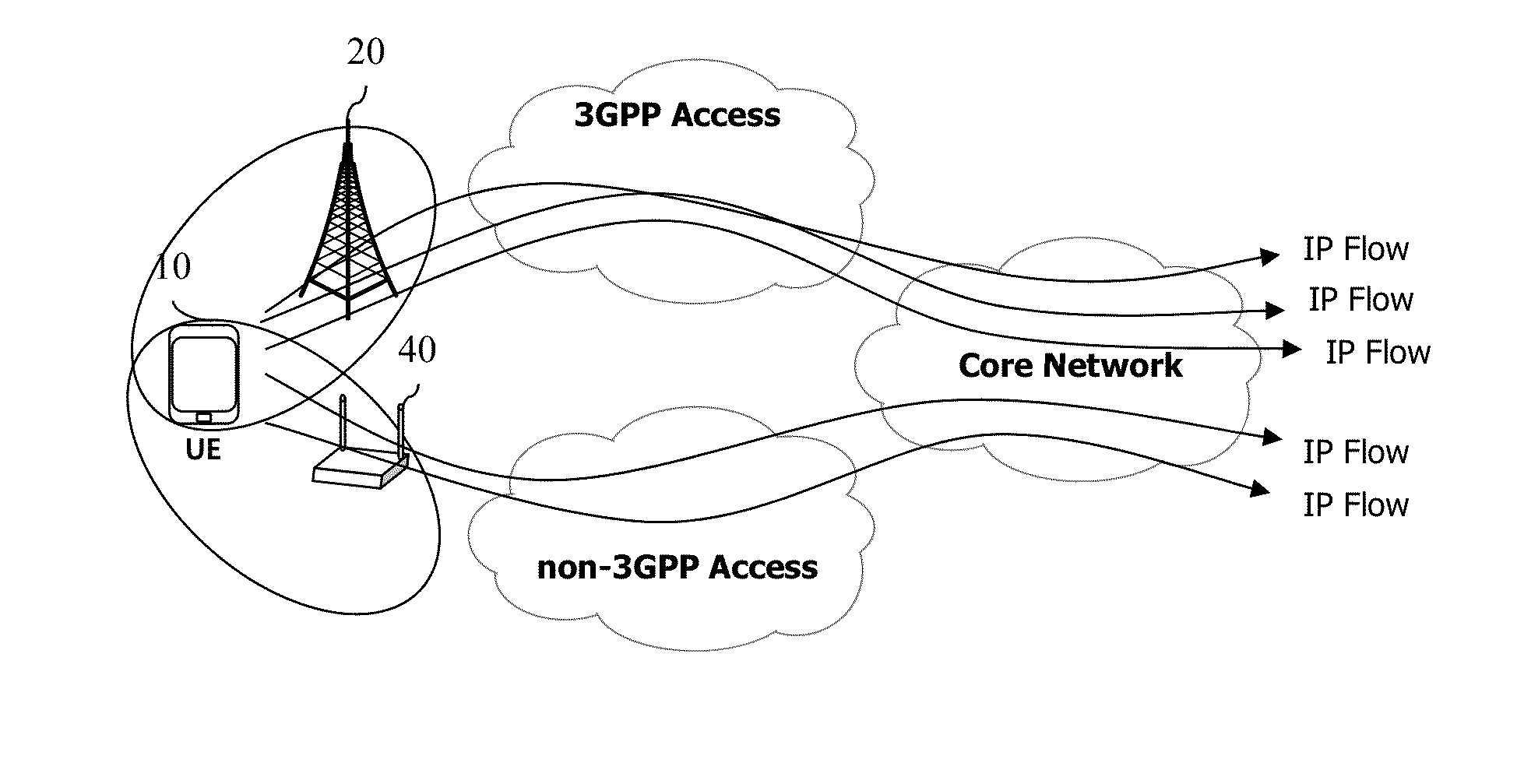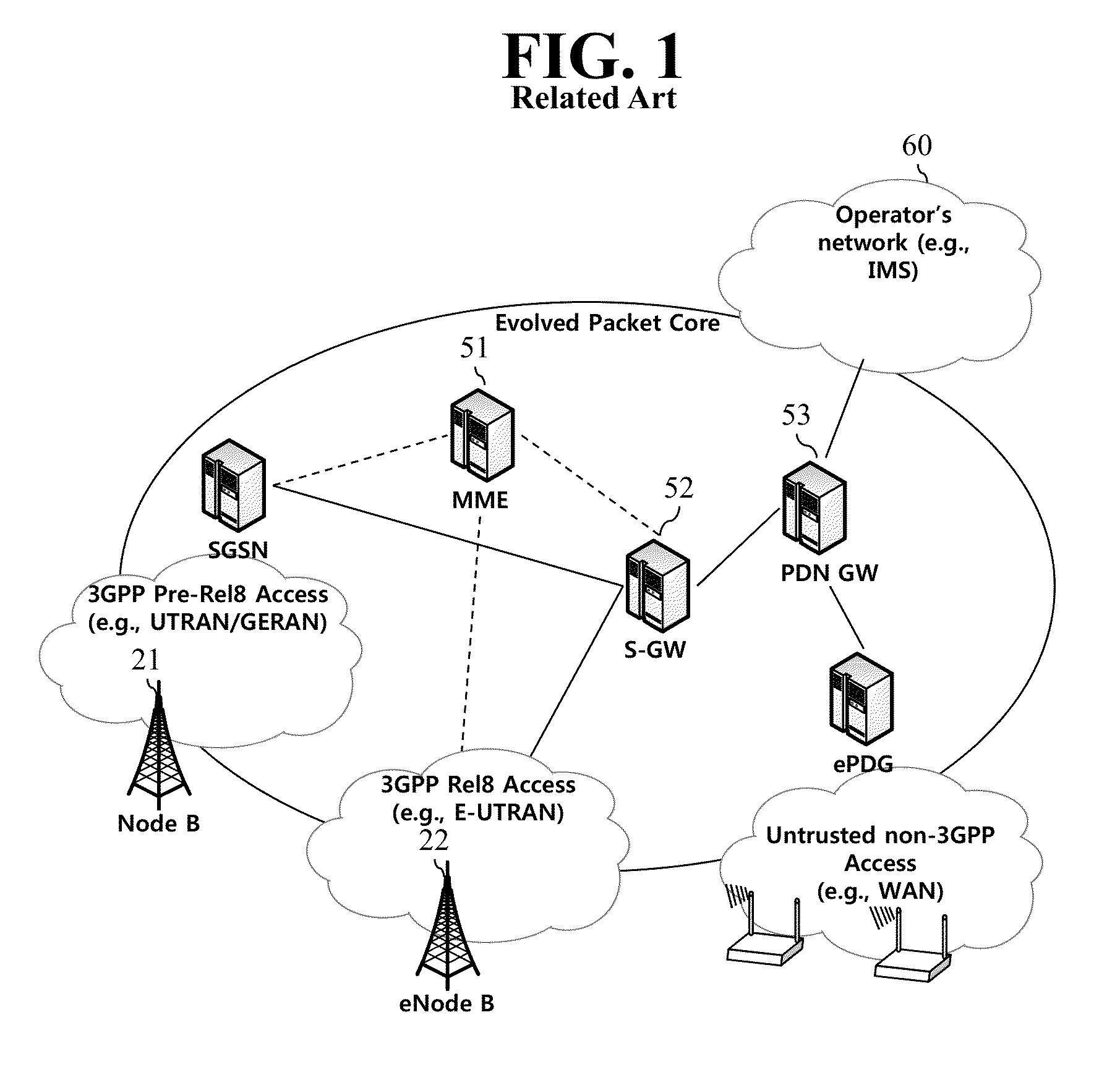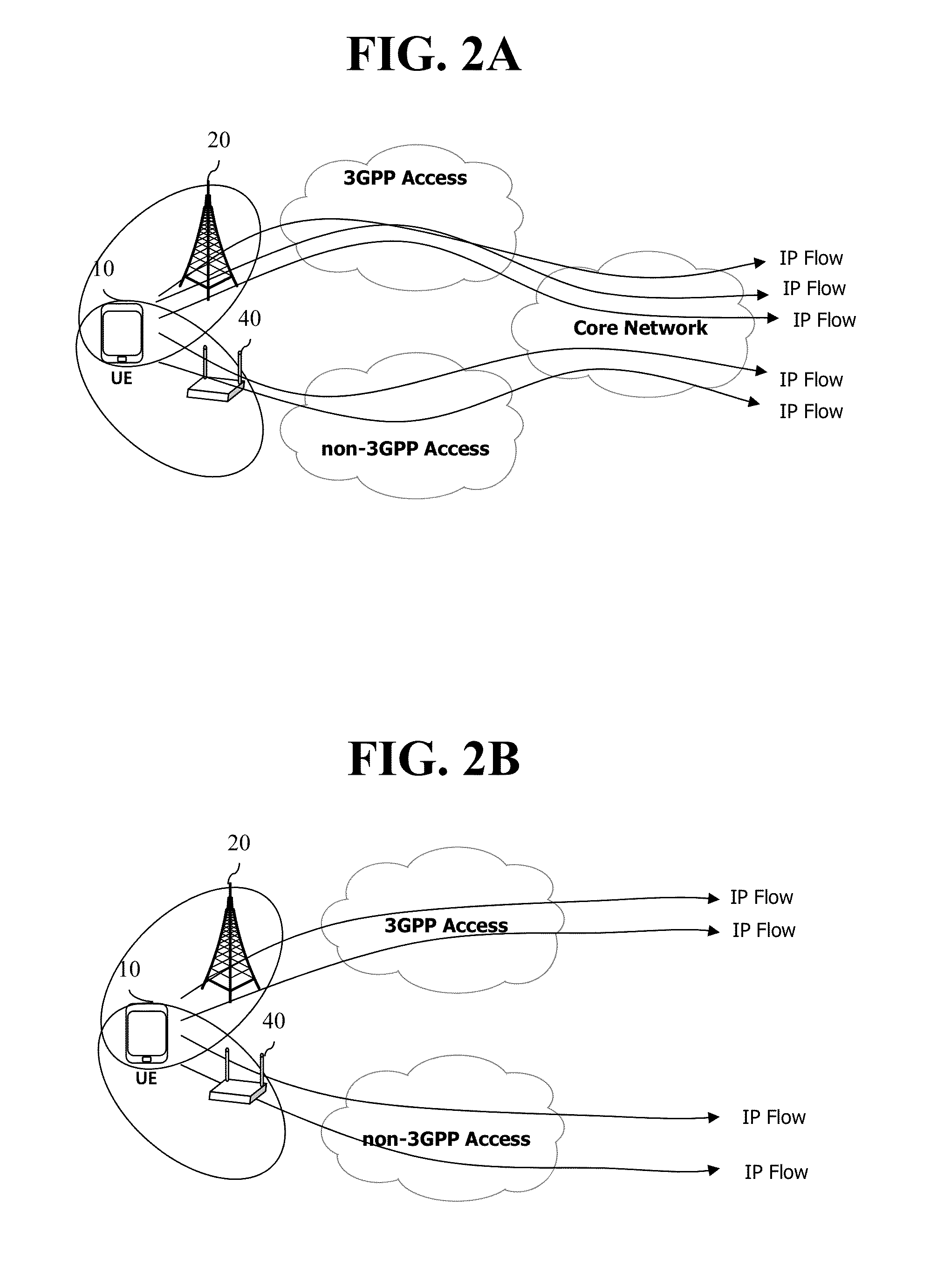Method and Terminal for Selecting AP
a terminal and access point technology, applied in the field of methods and terminals for selecting access points, can solve the problems of difficult to provide the bandwidth required, the congestion of the core network of a mobile communication provider, and the explosive increase of data, so as to achieve the effect of effectively selecting an access point and reducing the time required to select the access poin
- Summary
- Abstract
- Description
- Claims
- Application Information
AI Technical Summary
Benefits of technology
Problems solved by technology
Method used
Image
Examples
first embodiment
[0093]However, in order to select and access the hotspot 2.0 AP, the NAI realm is queried to the ANQP based servers 800a, 800b, and 800c and acquired and thereafter, compared with the NAI realm in the preference list provided by the ANDSF 600.
[0094]However, a time required to query and acquire the NAI realm is relatively longer than a time required to acquire the SSID. In the worst case, when the number of hotspot 2.0 APs is considerably large, quite a long time may be taken to query and acquire the NAI realm to the ANQP based servers of all APs.
[0095]Meanwhile, the hotspot 2.0 APs 400c, 400d, and 400e provide various additional information, the venue information (Venue Group and Venue Type), BSS load information, and the like, but according to the first embodiment, the information may not be used in selecting the AP. For example, even though an AP having a large load may be allowed not to be selected when load information is used, the information may not be used in the first embod...
second embodiment
[0102]First, according to the IEEE 802.11 standard, since the roaming consortium ID is defined as “each OI (Organizational Identifier) identifies an SSP (Subscription Service Provider) or group of SSPs (i.e, a roaming consortium)” and the OI is expressed as the OUI, the OUI may be acquired through the roaming consortium ID. Further, for example, since the OUI is expressed as LGI and the NAI realm is expressed as LG.com, the second embodiment enables more rapid AP selection by using the correspondence relationship between the NAI realm and the OUI.
[0103]That is, according to the second embodiment, an appropriate AP may be selected even without directly using the ANQP query to the AP by appropriately using broadcasted information. First, when an associated AP fails to access at the time of attempting access by selecting the best PLMN or service provider, another AP is associated to attempt access again by selecting the best PLMN or the service provider.
[0104]As such, an AP to be acces...
third embodiment
[0131]In detail, referring to FIG. 8, the UE 100 acquires various information indicating the state or feature from the hotspot 2.0 APs 400a, 400c, and 400e, for example, the venue information (Venue Group and Venue Type), the BSS load information, and the like in addition to the SSID and the roaming consortium information according to the
[0132]In addition, the UE 100 excludes the AP that does not match the predetermined condition while creating the available list (S330). As such, the available list may be more simplified by excluding the AP which does not match the condition.
[0133]Meanwhile, when the load information is used among the aforementioned various additional information, the UE 100 may select a less-loaded AP. When there is no less-loaded AP, another radio access technology (RAT) may be alternatively selected.
[0134]Since other processes illustrated in FIG. 8 are similar as the processes of FIG. 7, a detailed description thereof will be omitted.
[0135]Contents which have bee...
PUM
 Login to View More
Login to View More Abstract
Description
Claims
Application Information
 Login to View More
Login to View More - R&D
- Intellectual Property
- Life Sciences
- Materials
- Tech Scout
- Unparalleled Data Quality
- Higher Quality Content
- 60% Fewer Hallucinations
Browse by: Latest US Patents, China's latest patents, Technical Efficacy Thesaurus, Application Domain, Technology Topic, Popular Technical Reports.
© 2025 PatSnap. All rights reserved.Legal|Privacy policy|Modern Slavery Act Transparency Statement|Sitemap|About US| Contact US: help@patsnap.com



